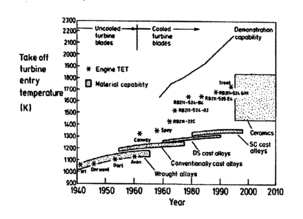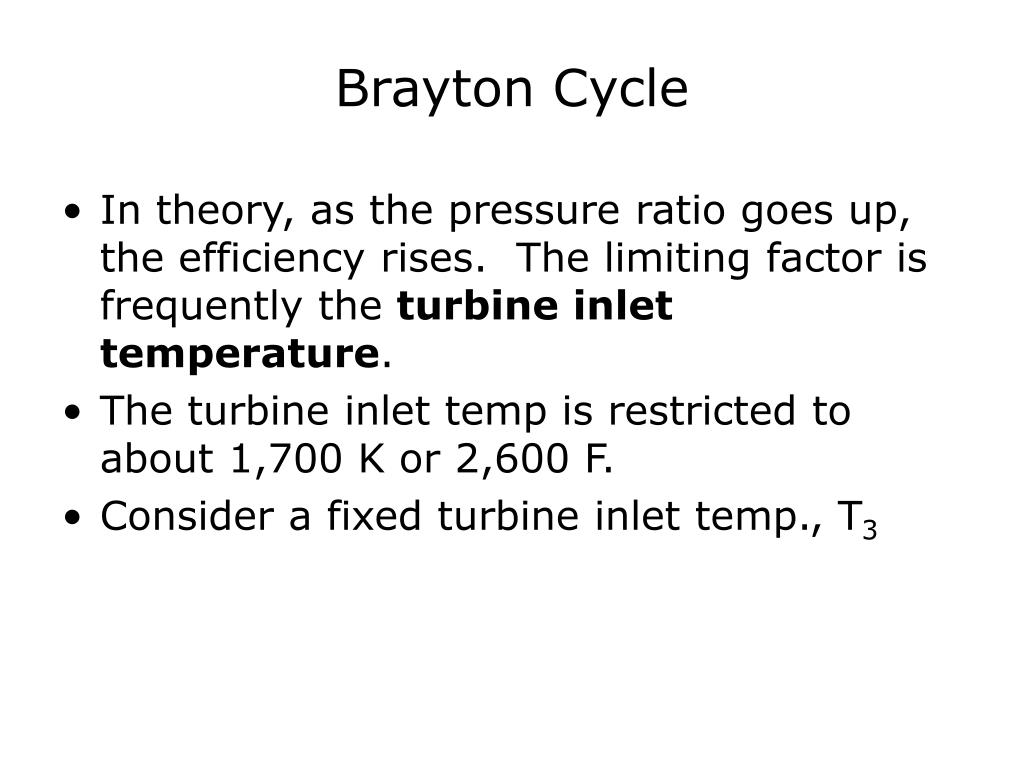

(3.8) yields an expression for the thermal efficiency of a Brayton cycle: Using this relation in the expression for thermal efficiency, Eq. We know that points and are on a constant pressure process as are points and, and adiabatic and reversible, so. To proceed further, we need to examine the relationships between the different temperatures. The thermal efficiency of the Brayton cycle can now be expressed in terms of the temperatures: (3.8 ) Treating the working fluid as a perfect gas with constant specific heats, for the heat addition from the combustor, The heat exchange can be expressed in terms of enthalpy differences between the relevant states. We can see this by writing the first law in terms of enthalpy (see Section 2.3.4) or by remembering the definition of. Where, are defined as heat received by the system ( need to evaluate the heat transferred in processes - andįor a constant pressure, quasi-static process the heat exchange per unit mass is Here is zero because is a function of state, and any cycle returns the system to its starting state3.2. Tracing the path shown around the cycle from - and back to, the first law gives (writing the equation in terms of a unit mass), The objective now is to find the work done, the heat absorbed, and the thermal efficiency of the cycle. Muddy Points Would it be practical to run a Brayton cycle in reverse and use it as refrigerator? (MP 3.10) Top: turbojet with afterburning, bottom: GE F404 low bypass ratio turbofan with afterburning (Hill and Peterson, 1992).įigure 3.15: Thermodynamic model of gas turbine engine cycle for power generationįigure 3.16: Options for operating Brayton cycle gas turbine engines

Closed cycles are used, for example, in space power generation.įigure 3.14: Schematics of typical military gas turbine engines. Figure 3.16(b) shows the alternative, a closed cycle, which recirculates the working fluid. This is the way a jet propulsion cycle works. Figure 3.16(a) shows an ``open'' cycle, where the working fluid enters and then exits the device. In practice, real Brayton cycles take one of two forms. We will typically represent these components schematically, as in Figure 3.15.
#Net workdone in brayton cycle generator
take the remaining work out and use it to accelerate fluid for jet propulsion, or to turn a generator for electrical power generation d - a Cool the air at constant pressure back to its initial condition.įigure 3.13: Sketch of the jet engine components and corresponding thermodynamic states The components of a Brayton cycle device for jet propulsion are shown in Figure 3.14. take some work out of the air and use it to drive the compressor, and 2. The cycle consists of four processes, as shown in Figure 3.13 alongside a sketch of an engine:Ī - b Adiabatic, quasi-static (or reversible) compression in the inlet and compressor b - c Constant pressure fuel combustion (idealized as constant pressure heat addition) c - d Adiabatic, quasi-static (or reversible) expansion in the turbine and exhaust nozzle, with which we 1. The Brayton cycle (or Joule cycle) represents the operation of a gas turbine engine.


 0 kommentar(er)
0 kommentar(er)
